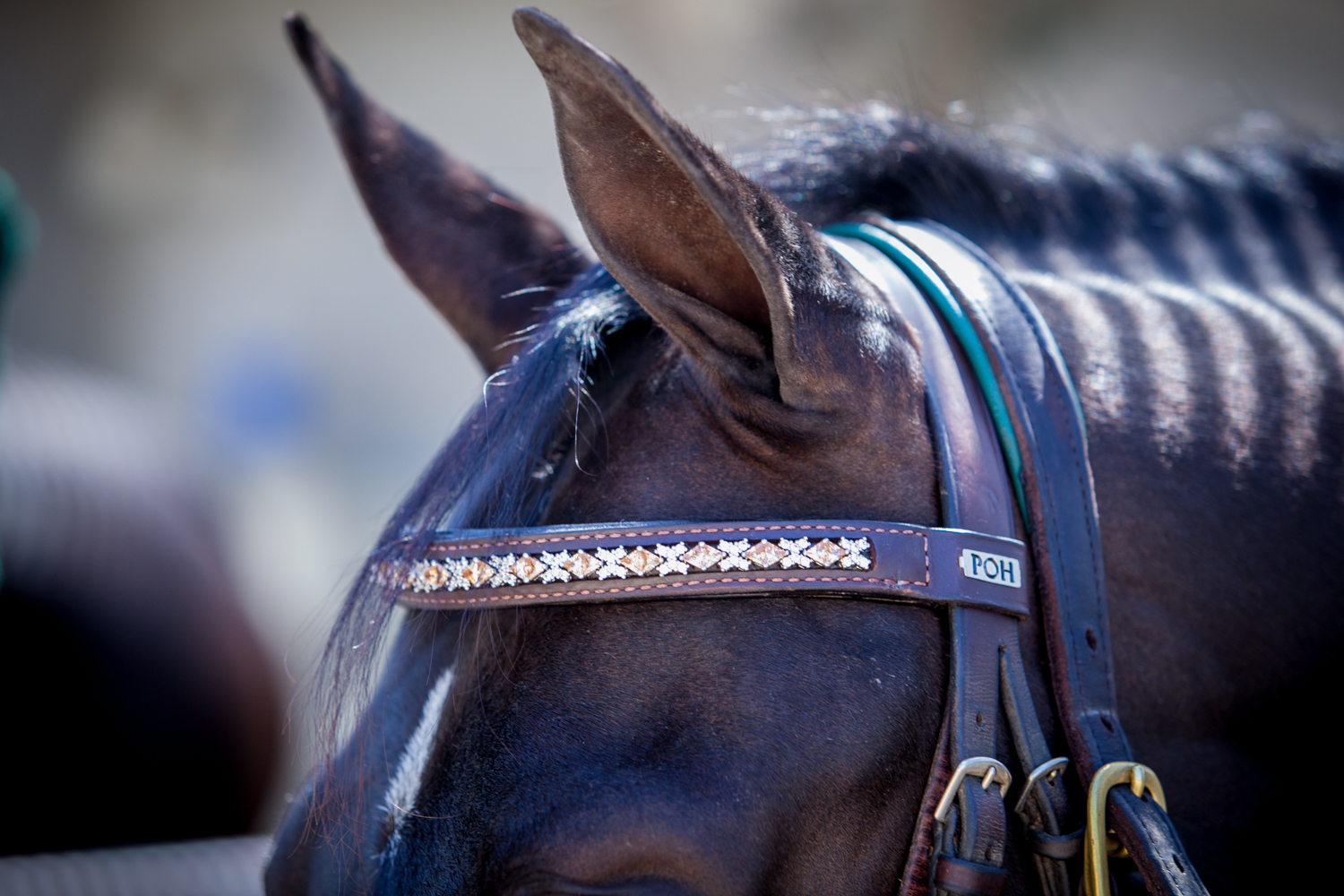Putting a headstall on a horse might seem daunting if you’re new to the equestrian world, but it’s an essential skill for every horse rider. Whether you’re preparing for a ride or training, properly fitting a headstall ensures the comfort and control of the horse. In this article, we will walk you through each step, ensuring you are confident and proficient in this important task. Headstall placement is crucial for a safe and enjoyable riding experience.

Introduction to Headstall Placement
A headstall is part of the bridle that goes around the horse’s head, holding the bit in place within its mouth. Horses may have various reactions when fitting the headstall, so patience and technique are key.

Understanding the Components of a Headstall
The Crown Piece
The crown piece is the part of the headstall that goes over the top of the horse’s head, sitting just behind the ears.
The Browband
The browband runs across the horse’s forehead, preventing the crown piece from sliding back.
The Cheek Pieces
The cheek pieces run down either side of the horse’s face, attaching to the bit.
The Throatlatch
The throatlatch goes under the horse’s throat, helping to keep the headstall in place.
The Bit
The bit sits inside the horses mouth and is connected to the reins, allowing the rider to communicate with the horse.
The Reins
The reins are attached to the bit, enabling the rider to give commands and steer the horse.

Selecting the Right Headstall for Your Horse
Selecting the appropriate headstall is crucial for the comfort of both horse and rider. Factors to consider include the size, type of leather, and whether it fits the specific needs of your riding style.

Steps to Putting a Headstall on a Horse
Step 1: Approach Your Horse Calmly
Always approach your horse with confidence and calm. Speak in a soothing voice and give your horse a chance to see and smell the headstall.
Step 2: Position Yourself Correctly
Stand on the left side (near side) of the horse, facing forward.
Step 3: Hold the Headstall Properly
Hold the crown piece in your right hand and the bit in your left hand.
Step 4: Place the Crown Piece Over the Ears
Gently slide the crown piece over the horse’s ears, ensuring the browband sits comfortably on the horse’s forehead.
Step 5: Adjust the Bit
Hold the bit in the palm of your left hand and guide it into the horse’s mouth. Ensure it’s properly placed and not causing discomfort.
Step 6: Secure the Throatlatch
Buckle the throatlatch under the horse’s throat, allowing enough room to fit a few fingers between the strap and the horses skin.
Common Mistakes and How to Avoid Them
Many beginners make mistakes that can cause discomfort to the horse or result in improper fit. Knowing these common errors can help you avoid them.
Improper Bit Placement
Ensure the bit is not too high or too low in the horse’s mouth. It should sit comfortably without pinching.
Too Tight Throatlatch
A throatlatch that is too tight can cause discomfort and breathing issues for the horse.
Incorrect Crown Piece Position
The crown piece should sit just behind the ears, not on top of them.
Maintaining Your Headstall
Regular maintenance of your headstall will prolong its life and ensure comfort for your horse.
Cleaning Leather
Use a soft cloth and appropriate leather cleaner to keep the headstall clean and supple.
Inspecting for Wear and Tear
Regularly check the headstall for signs of wear and tear, paying close attention to the stitching and buckles.
Proper Storage
Store the headstall in a cool, dry place to prevent mold and mildew.
Troubleshooting Common Issues
Learning to troubleshoot common issues with headstalls can prevent problems from escalating.
Horse Refuses the Bit
If your horse refuses the bit, ensure it’s clean and free of sharp edges. Consider trying a different bit style for comfort.
Headstall Slips
A slipping headstall may indicate incorrect sizing or improper strapping.
Advanced Tips for Experienced Riders
Even experienced riders can benefit from advanced tips to improve headstall placement and horse comfort.
Custom Fitting
Consider custom-fitting a headstall to ensure an ideal fit for your horse.
Using Different Bridle Types
Experiment with different bridle types for specific riding styles and horse preferences.
External and Internal Resources
For further reading on headstall and bridle care, check out this comprehensive guide.
Additionally, you may find these articles helpful: Put on Bridle, Bridle Horse English, Horse Bridle Cost.
FAQs
How do I choose the right headstall for my horse?
Consider the size, material, and purpose when choosing a headstall for your horse. A well-fitted headstall will provide comfort and control.
Can I use any type of bit with my headstall?
Not all bits are compatible with all headstalls. Ensure the bit you choose fits properly within the headstall and meets your horse’s needs.
How often should I clean my headstall?
Regular cleaning after each ride is ideal. However, a thorough clean and inspection of the headstall should be done at least once a month.
As an Amazon Associate, I earn from qualifying purchases.
As an Amazon Associate, I earn from qualifying purchases.